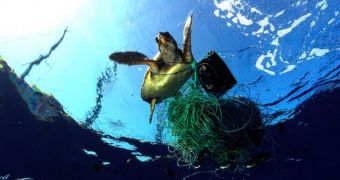Green group Oceana, whose members and supporters are in the business of protecting the biodiversity that currently populates our seas and oceans, has recently released a new report pointing the finger at nine of what the organization calls the dirtiest fisheries in the United States.
On its website, Oceana details that some of the fisheries it has found to be guilty of throwing away a large portion of their catch and thus compromising marine ecosystems are as follows:
Southeast Snapper-Grouper Longline Fishery, California Set Gillnet Fishery, Southeast Shrimp Trawl Fishery, California Drift Gillnet Fishery, and Gulf of Alaska Flatfish Trawl Fishery.
The others are Northeast Bottom Trawl, Mid-Atlantic Bottom Trawl Fishery, Atlantic Highly Migratory Species Longline Fishery, and New England and Mid-Atlantic Gillnet Fishery.
Oceana argues that, according to its investigations into the matter at hand, these nine fisheries dispose of about 50% of their overall catch on a regular basis.
Consequently, they are the ones to blame for over half of the bycatch reported in the United States. Besides, they need be held accountable for injuring or killing thousands of marine creatures that are either endangered or threatened on a yearly basis.
“Whether it’s the thousands of sea turtles that are caught to bring you shrimp or the millions of pounds of cod and halibut that are thrown overboard after fishermen have reached their quota, bycatch is a waste of our ocean’s resources.”
“Bycatch also represents a real economic loss when one fisherman trashes another fisherman’s catch,” Dominique Cano-Stocco, campaign director at Oceana, argued in a recent statement.
To put things in perspective, it must be said that, in just one year, Southeast Snapper-Grouper Longline Fishery captured and then threw away over 400,000 sharks.
New England and Mid-Atlantic Gillnet Fishery, on the other hand, captured over 2,000 dolphins, porpoises, and seals in just one year, and, in the same time span, Gulf of Alaska Flatfish Trawl Fishery discarded over 34 million pounds (15.4 million kilograms) of fish.
Specialists working with Oceana say that, according to evidence at hand, open ocean trawl, longline, and gillnet fisheries are the ones that produce the highest bycatch.
With the help of the Leonardo DiCaprio Foundation, Oceana is now working on promoting more sustainable fishing practices and hopes that these nine fisheries, together with others of their kind, will agree to green up their wars.
“Reducing bycatch is a win/win for fishermen and conservationists. By eliminating wasteful and harmful fishing practices we can restore and maintain fish populations that are essential to renewed abundance and healthy oceans, while also preventing the deaths of whales, dolphins, seals and sea turtles,” said Dominique Cano-Stocco.
Oceana thinks that fishing practices can become more sustainable and eco-friendly than they currently are provided that the federal government counts everything that is caught in a fishery, bycatch included, limits wasted catches, and promotes cleaner fishing gear intended to curb bycatch. Needless to say, closely monitoring fisheries should also be of utmost importance.

 14 DAY TRIAL //
14 DAY TRIAL //